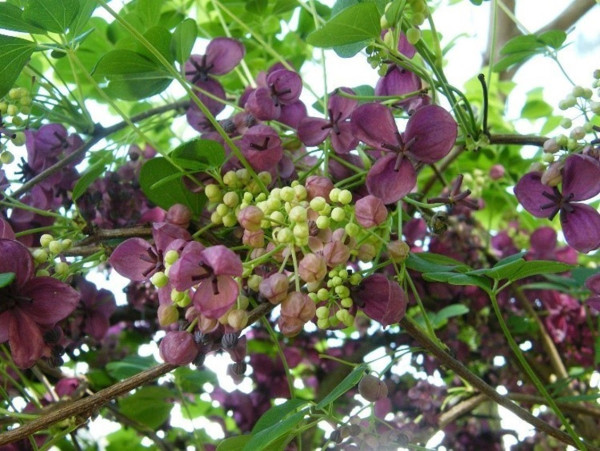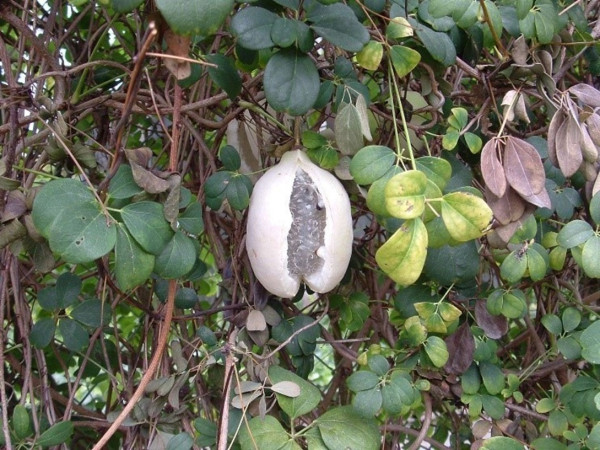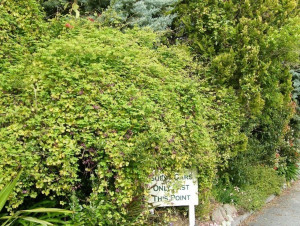Chocolate vine (Akebia) is listed as a sustained control pest in the Tasman-Nelson Regional Pest Management Plan (RPMP).
While it is too widespread to eradicate, the goal is to ensure that infestations don’t cause significant impacts to property and native habitats.
Chocolate vine fills a similar ecological niche to old man’s beard, and left unchecked will spread to neighbouring properties, smothering other plants.
It’s a fast-growing vine that mainly spreads by growth, but its seeds are also spread by birds.
Chocolate vine thrives in shady conditions. It can spread rapidly across the ground, forming dense mats that prevent new seedlings from growing and smothering native ground cover, shrubs and young trees.
You can see fragrant purple chocolate/vanilla smelling flowers from August to October. Seed pods contain white pulp and small black seeds that are spread by birds from October onwards.
Under the RPMP, the occupier is responsible for chocolate vine control on their property. We recommend that vines are either dug out or sprayed.
If spraying, cut vines at waist height and then spray below this point with either:
- 150 ml Glyphosate 360 and 10 ml of penetrant /10 litres or;
- 60 ml triclopyr 600 EC and 10 ml penetrant /10 litres.
If foliar spray is unsuitable, glyphosate gels can be used. Cut vines near the ground and apply a small amount of gel to both sides of the cut.
Once under control, replant with native akakiore (parsonsia heterophylla), puawhananga (clematis paniculata) or one of the many non-weedy, exotic climbers available in garden centres.




